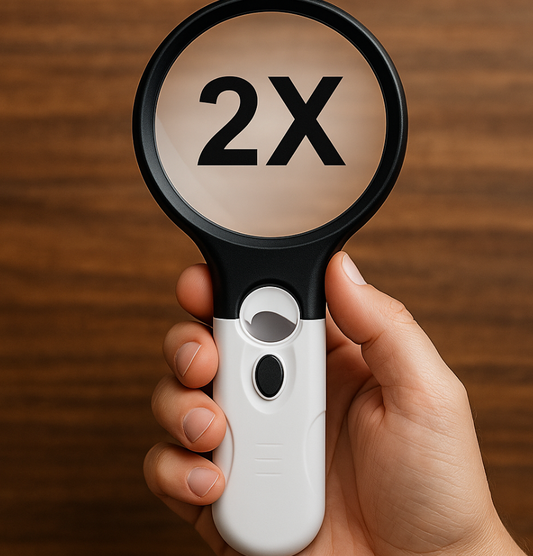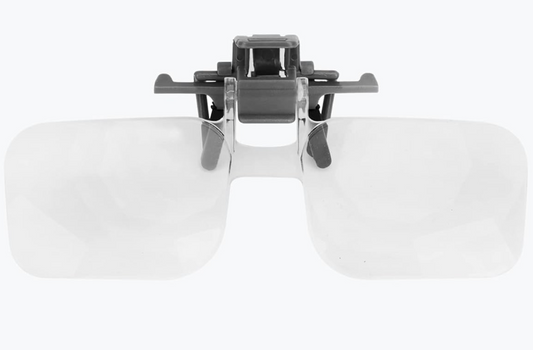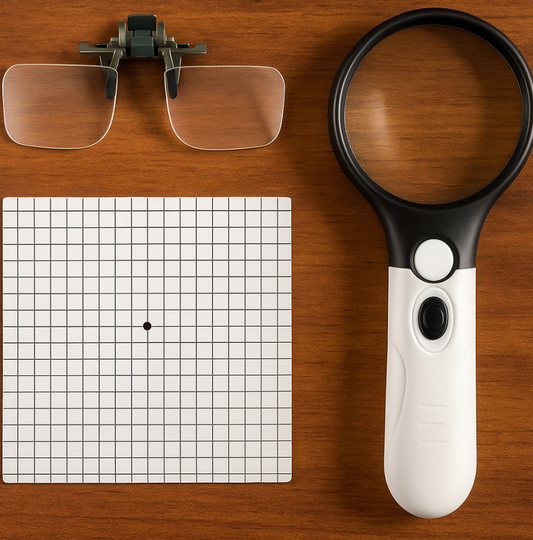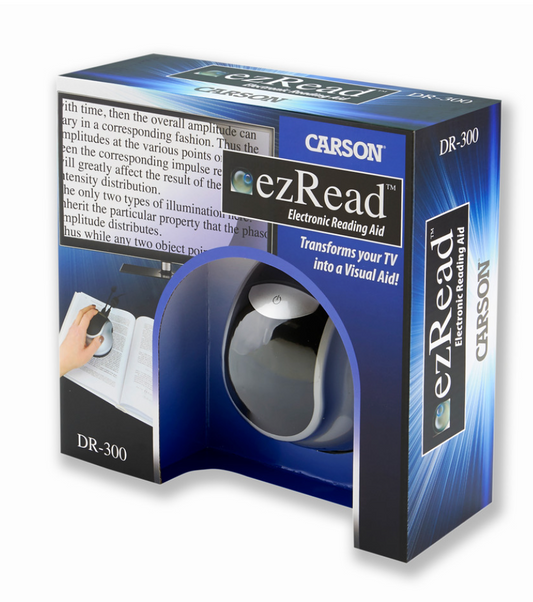What is Blepharitis and Why Does it Make My Vision Blurry?
Share
Blepharitis is a common yet often frustrating condition that affects the eyelids, causing inflammation along the lash line. This inflammation can result in redness, irritation, crusting, and in many cases, blurry vision. But why does blepharitis lead to blurry vision, and what can you do to manage it effectively? Let’s explore.
What is Blepharitis?
Blepharitis occurs when the oil glands at the base of the eyelashes become clogged or dysfunctional, leading to irritation and inflammation. It is typically categorized into two types:
-
Anterior Blepharitis: Affects the outer edge of the eyelid, near the eyelashes.
-
Posterior Blepharitis: Affects the inner edge of the eyelid, where it meets the eyeball, and is often associated with meibomian gland dysfunction (MGD). Your meibomian glands play an important role in keeping your tear film stable and your vision clear.
Why Does Blepharitis Cause Blurry Vision?
Blurry vision associated with blepharitis is often due to:
-
Tear Film Instability: Dysfunctional oil glands disrupt the tear film, causing it to evaporate too quickly. This leads to dry spots on the cornea, which can make your vision appear blurry.
-
Debris on the Ocular Surface: Flakes, crusting, and debris from inflamed eyelids can accumulate in the tear film, further affecting clarity.
-
Swollen Eyelids: Inflammation can distort the eyelid’s normal function, interfering with tear distribution and optical clarity. This is where some patients may notice their eyes are constantly red-rimmed, like they have been crying.
-
Secondary Infections or Corneal Damage: In severe cases, untreated blepharitis can lead to complications that affect vision more significantly.
How to Manage Blepharitis and Improve Symptoms
Managing blepharitis involves consistent eyelid hygiene and addressing underlying issues like inflammation or oil gland dysfunction. Here’s a look at effective treatments:
1. Eyelid Hygiene with Blephadex
Blephadex lid wipes are specially formulated to clean the eyelids and lashes, removing debris, bacteria, and excess oil that contribute to inflammation. Infused with tea tree oil and coconut oil, they help soothe irritated skin, reduce bacteria, and restore comfort. Regular use of Blephadex wipes can improve eyelid hygiene, prevent flare-ups, and support overall eye health.
2. Warm Compresses with a Bruder Mask
A Bruder Mask is a reusable warm compress designed to improve meibomian gland function by melting clogged oils in the eyelids. Applying a heated mask for 10-15 minutes daily can enhance tear quality, reduce inflammation, and alleviate dryness, ultimately improving both comfort and vision clarity.
3. Advanced Treatments: IPL and Low-Level Light Therapy
-
Intense Pulsed Light (IPL): IPL therapy uses light pulses to target inflammation, reduce bacterial load, and improve meibomian gland function. This treatment has shown promising results in managing chronic blepharitis and MGD.
-
Low-Level Light Therapy (LLLT): LLLT uses light energy to stimulate cellular repair and reduce inflammation in the eyelids. It’s a non-invasive option that supports glandular health and tear film stability.
- Both of these treatments are typically performed at your optometrists office and do carry a higher price point that at home solutions.
4. Other Recommendations
-
Artificial Tears: Lubricating eye drops can help stabilize the tear film and alleviate dry eye symptoms. We find our patients like Thealoz Duo eyedrops the best when dealing with Blepharitis. Hyabak Artifical Tears are also a great option.
-
Omega-3 Supplements: Essential fatty acids support healthy meibomian gland function and reduce inflammation, making them a valuable addition to your routine. PRN Omega-3 for Dry Eye continues to lead the way in their formulation of an Omega-3 supplement for blepharitis and dry eye. Always consult your doctor prior to starting a new supplement.
-
Prescription Medications: In severe cases, your eye care provider may recommend topical antibiotics, steroid drops, or other medications to control inflammation and bacterial overgrowth.
When to See a Doctor
If your symptoms persist despite at-home treatments, or if your vision becomes significantly blurry, it’s important to see an eye care professional. They can diagnose the severity of your condition and recommend additional treatments to restore comfort and clarity.
Final Thoughts
Blepharitis can be a chronic condition, but with consistent care and the right treatments, you can manage symptoms and improve your quality of life. Products like Blephadex wipes and a Bruder Mask are excellent tools for daily maintenance, while advanced therapies like IPL and LLLT can provide relief for more stubborn cases. By taking a proactive approach to eyelid health, you can reduce inflammation, enhance tear quality, and enjoy clearer, more comfortable vision.
If you're looking for an easy all in one solution to help you combat your blepharitis - we've created a simple Blepharitis Management Starter Pack. Subscribe for even more savings on top of the bundling 10% discount.
We know the options can be overwhelming to manage your condition - consistency wins. Even if you choose just one of the above to help, you should notice a slight improvement over time.



